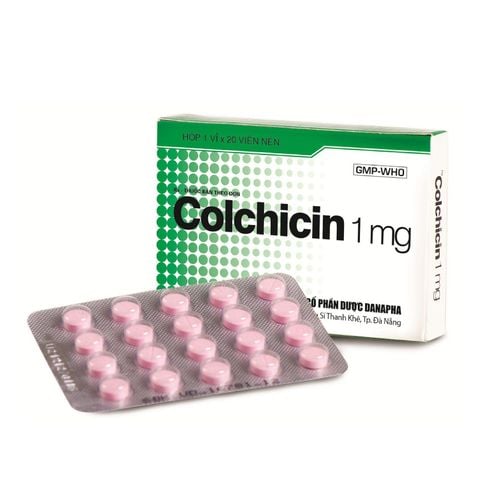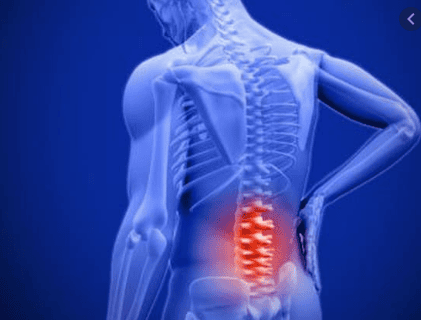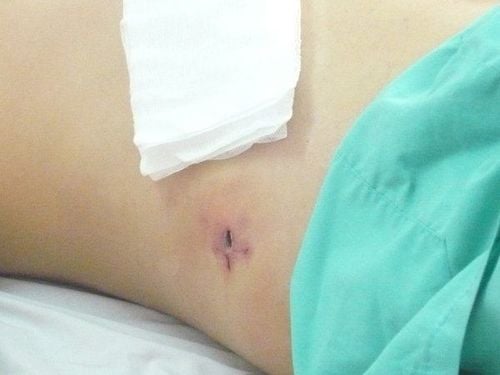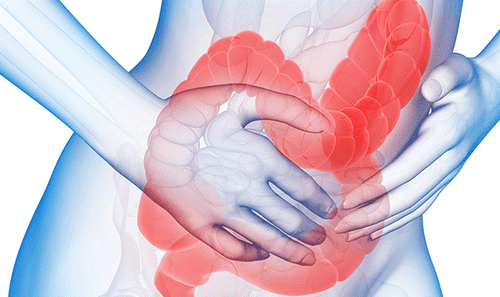This is an automatically translated article.
The article was professionally consulted by a neurosurgeon, Department of General Surgery, Vinmec Central Park International General Hospital.Lumbar stabilization surgery is a major surgery that requires a long recovery time. Accordingly, for quick recovery results, patients need to follow the doctor's instructions and instructions when at the hospital and after being discharged home. The following article will share about care and health education after surgery to stabilize the lumbar spine.
1. Recovery from spinal stabilization surgery 1 to 4 weeks later
After 1 to 4 weeks of spinal stabilization, patients usually begin to feel a little better each day by this time, but the risks of infection and safety issues should be kept in mind. medicine.
1.1. Incision healing
Surgical site infections are most likely to arise about 2 to 4 weeks after surgery. Some symptoms to watch out for include:
Fever Enlarged redness at the incision Increased back pain Deformity or foul smell of drain foot If these signs appear, a surgeon should be contacted. treat immediately. A patient with a deep infection is usually treated with a course of intravenous antibiotics (usually about 6 weeks). Additional surgery may or may not be needed to clean the incision.
To keep the incision clean, it is important to wash the incision with soap and water at least once a day and dry. Ointments or lotions are not recommended. Stitches will usually be removed about 2 weeks after surgery, when it may be possible to return to bathing, swimming, and other water activities if the wound is completely healed.
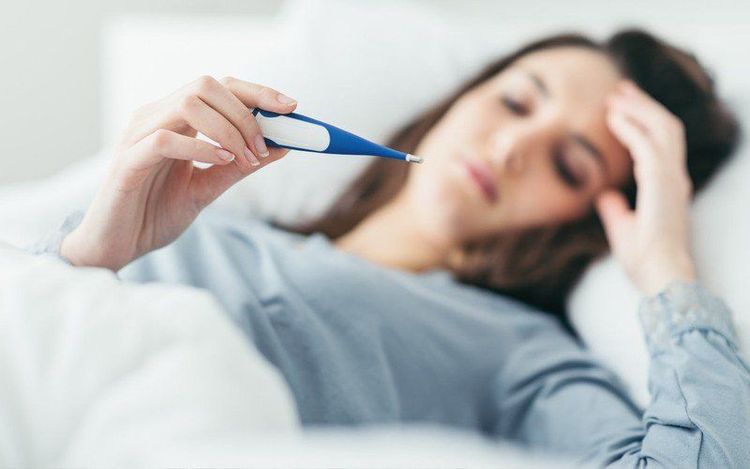
Sốt có thể là dấu hiệu của nhiễm trùng vết mổ
1.2. Drug switching
If using opioid pain relievers, the prescription will usually include instructions on how to gradually quit over a few weeks.
Moving away from opioid pain medications requires patients to know some of the pros and cons of other pain relief options. Specifically:
Acetaminophen (Tylenol) is considered a relatively safe and effective pain reliever and can be used when quitting opioid pain medication. However, the dose must be closely monitored to avoid liver damage. Because it affects the liver, people who drink alcohol should be especially careful with acetaminophen before taking it. Also when too much acetaminophen is taken, the daily dose should not exceed 4000 milligrams (8 Tylenol tablets) Non-steroidal anti-inflammatory drugs (NSAIDs). Avoiding aspirin and NSAID products (Ibuprofen, Naproxen, or Celebrex) for at least 3 months after lumbar spine fusion is generally recommended. These products may interfere with the growth and development of bone healing.
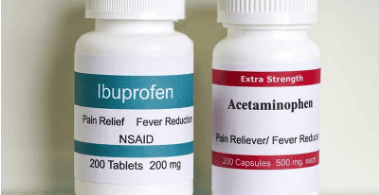
Thuốc Acetaminophen và Ibuprofen
It is important to discuss your personal medical history and all medications with your surgeon, care assistant or pharmacist.
1.3. Walking plays a major role
Walking is the ideal form of exercise during this period. Not only does it help increase muscle strength to better support the spine, but it also helps the heart, lungs and digestive system. Gradually increasing walking time and stopping when pain occurs is the best way. Your surgeon or caregiver may recommend other exercises.
Moving around as much as comfortably will help keep the patient in good posture for the next step of recovery, which often includes outpatient physical therapy and driving.
2. Rehabilitation surgery to stabilize the spine from 1 to 3 months later
As the back continues to heal, patients often begin to feel better and find they can participate in more activities. The worst pain is usually 4 weeks after surgery. Pain is likely to continue to subside, but some patients continue to have pain 3 to 6 months after surgery.
2.1. Critical time for combination
Over a period of about 1 to 3 months after surgery, a lumbar fusion mass is being formed. While the fusion is developing together and strengthening, the following movements should continue to be avoided to prevent fusion:
Excessive lifting (anything over 10-15 pounds) Forward bending and arched back. Twist the upper body to the sides. Wear a back brace to help stabilize your back, which you can continue to wear for up to 3 months after surgery.
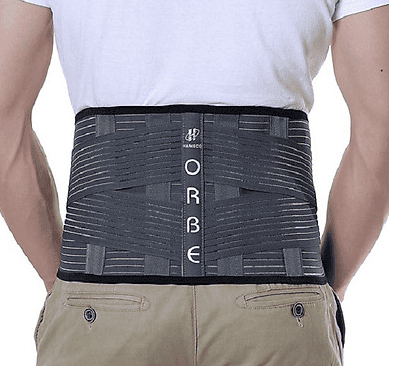
Người bệnh được khuyến khích đeo nẹp lưng
2.2. Increase activity level
As the pain subsides and energy levels increase, it is better to gradually increase your activity level. As long as it has been approved by the surgeon, the patient can start doing the following additional things:
Walk longer distances Light housework Driving 4-6 weeks after tightening surgery back, most patients were allowed to return to school or work that did not involve manual labor.
2.3. Benefits of physical therapy
About 6 weeks to 3 months after surgery, outpatient physical therapy can be started. Techniques are tailored to the individual, with more and more activities being added as strength increases. Physiotherapy helps patients recognize how to walk, sit, stand, and lie down, helping to prevent back pain from recurring. Safe ways to lift, pull, or push objects.
Patients may progress from slow, short walks to more vigorous exercise, such as swimming. Special exercises to strengthen the muscles that support the lower back. Physical therapists often recommend adjustments to the work environment to help patients return to the workplace. If a job is strenuous or arduous, it may take 6 months for the individual to return to work.

Tập vật lý trị liệu cột sống
3. Rehabilitation of spinal fusion surgery from 3 months and beyond
After lumbar spondylosis has healed for 3 months, it's time for physical activity and exercise to become central to the recovery process.
During the early stages of recovery, vigorous exercise is not recommended. However, due to the trauma of the surgery, the muscles in the trunk and the patient's general condition became somewhat weakened. Loss of muscle tone and reduced range of motion leading to stiffness are common, which should be addressed with exercise and physical therapy.
3.1. Exercise helps heal strengthening
Many patients worry that they may damage their bone fusion with exercise, but being active at this point promotes further healing. Once the combination is found to be progressing as expected, it is no longer fragile. Instead of jeopardizing bone fusion, exercising this area after 3 months will make it stronger. Accordingly, the patient must still avoid excessive bending, lifting and twisting in most cases, but good exercise, if accepted, has great benefits.
A progressive, controlled exercise program is usually started 6 weeks to 3 months after surgery. A physical therapist can help guide you in getting started with this exercise program. However, the patient eventually transitions to a long-term, self-directed exercise program that can be continued at home. More specialized physical therapy may be performed in return-to-work situations that involve physical labor.
3.2. When is it allowed to bend, lift and twist the spine?
Once the surgeon has determined on the radiograph that the fusion has completely solidified into a bony mass, a full return to an active lifestyle (including bending, lifting and twisting) is allowed. This approval usually occurs about 6 months after surgery, but can sometimes take close to 12 months. Many operations performed before surgery can be resumed after maximal fusion has been achieved.
Although you have returned to all activities, doctors still recommend maintaining many good habits that are necessary during recovery, such as performing stretching and strengthening exercises for the back such as aerobic and knee flexion when lifting heavy objects and do not smoke.
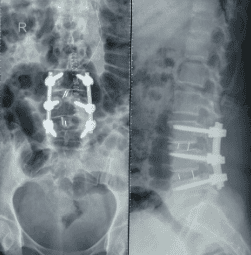
Hình ảnh Xquang phẫu thuật làm vững cột sống
3.3. Full recovery in 1 to 2 years
Full recovery from spinal stabilization surgery usually takes up to 8 months, bone growth continues for 12-18 months. In some cases where nerves are significantly injured before surgery, it can take up to 1 to 2 years to see how the nerves will heal.
Lumbar spine surgery is a major surgery, requiring the patient to persevere in following the doctor's instructions.
Currently, at Vinmec International General Hospital, there are full surgical facilities, functional physiotherapy exercises for patients after surgery. The entire procedure of examination, surgical treatment and rehabilitation is carried out under the guidance of experienced and qualified doctors, so the results of the recovery of the patient's health are progressing well.
Please dial HOTLINE for more information or register for an appointment HERE. Download MyVinmec app to make appointments faster and to manage your bookings easily.






